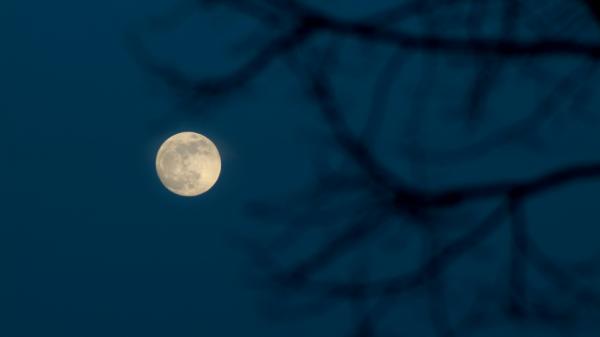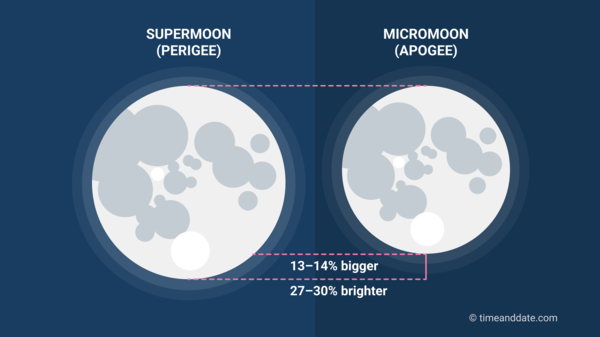What Is a Micromoon?
A Micromoon is when a Full Moon or a New Moon coincides with apogee, the point in the Moon's orbit farthest away from Earth.

A Micro Moon is a Full or New Moon near apogee—the Moon’s farthest point from Earth.
©iStockphoto.com/Wouter van Caspel
March 24-25, 2024: Micro Moon and penumbral lunar eclipse
April 2024: Jupiter and Moon close approach
The Farthest Point
The Moon orbits Earth in an elliptical path, which means one side of the path is closer to the Earth than the other.
The point in the Moon’s orbit closest to Earth is called perigee, while the point in the orbit farthest from Earth is known as apogee. The average distance between Earth and the Moon is 382,500 kilometers or 237,700 miles.
When a Full Moon or a New Moon occurs around apogee, it’s called a Micromoon, Minimoon or Apogee Moon. Like any other New Moon night, a Micro New Moon night is a good time to stargaze.
What can you see in your night sky tonight?
A Full or New Moon that occurs around perigee is called a Supermoon.
How can Full Moon be in the daytime?
May Look Smaller
A Micro Full Moon’s angular size is 12.5%–14.1% smaller than a Super Full Moon, and 5.9%–6.9% smaller than an average Full Moon (in years 1550–2650).


A Micromoon looks smaller than a Supermoon.
No Universal Rules
There are no universal rules as to how far away the Moon must be to qualify as a Micromoon. The following definitions are used at timeanddate.com:
- Micromoon: A Full Moon or New Moon that takes place when the center of the Moon is farther than 405,000 kilometers (ca. 251,655 miles) from the center of Earth.
- Supermoon: A Full or New Moon that occurs when the center of the Moon is less than 360,000 kilometers (ca. 223,694 miles) from the center of Earth.
The Moon: Our natural satellite
Micromoon Affects the Tides
The greatest difference between high and low tide is around Full Moon and New Moon. During these Moon phases, the gravitational forces of the Moon and the Sun combine to pull the ocean’s water in the same direction. These tides are known as spring tides or king tides.
Micromoons lead to around 5 cm (2 inches) smaller variation than regular spring tides, called apogean spring tides.
The tidal range is smallest during the 2 Quarter Moons, known as neaps or neap tide.
Sleep, crime, and menstruation: how Full Moons affect humans
Natural Disaster Trigger?
Old folklore accounts suggest that Full Moons and Micromoons affect human mental health and bring on natural disasters, like earthquakes, but no scientific evidence supports any such correlation.